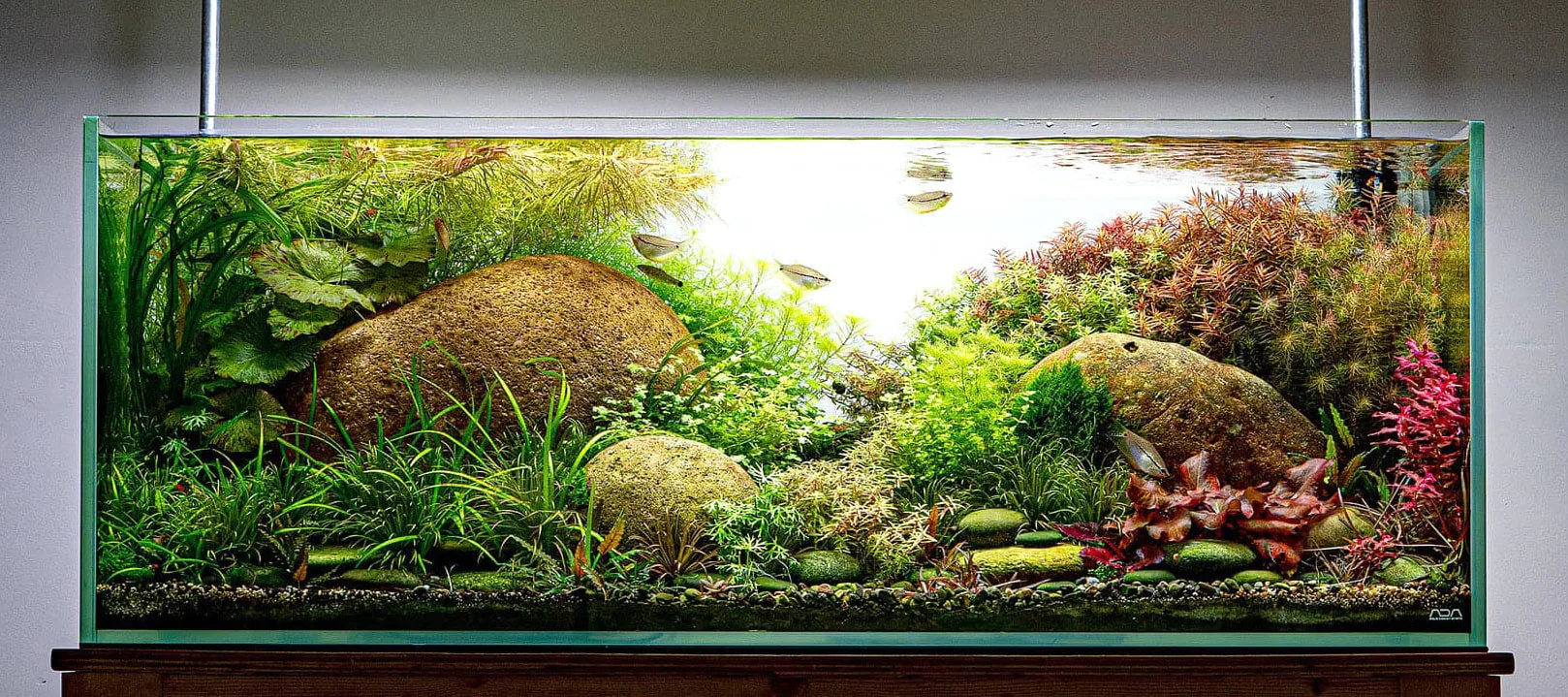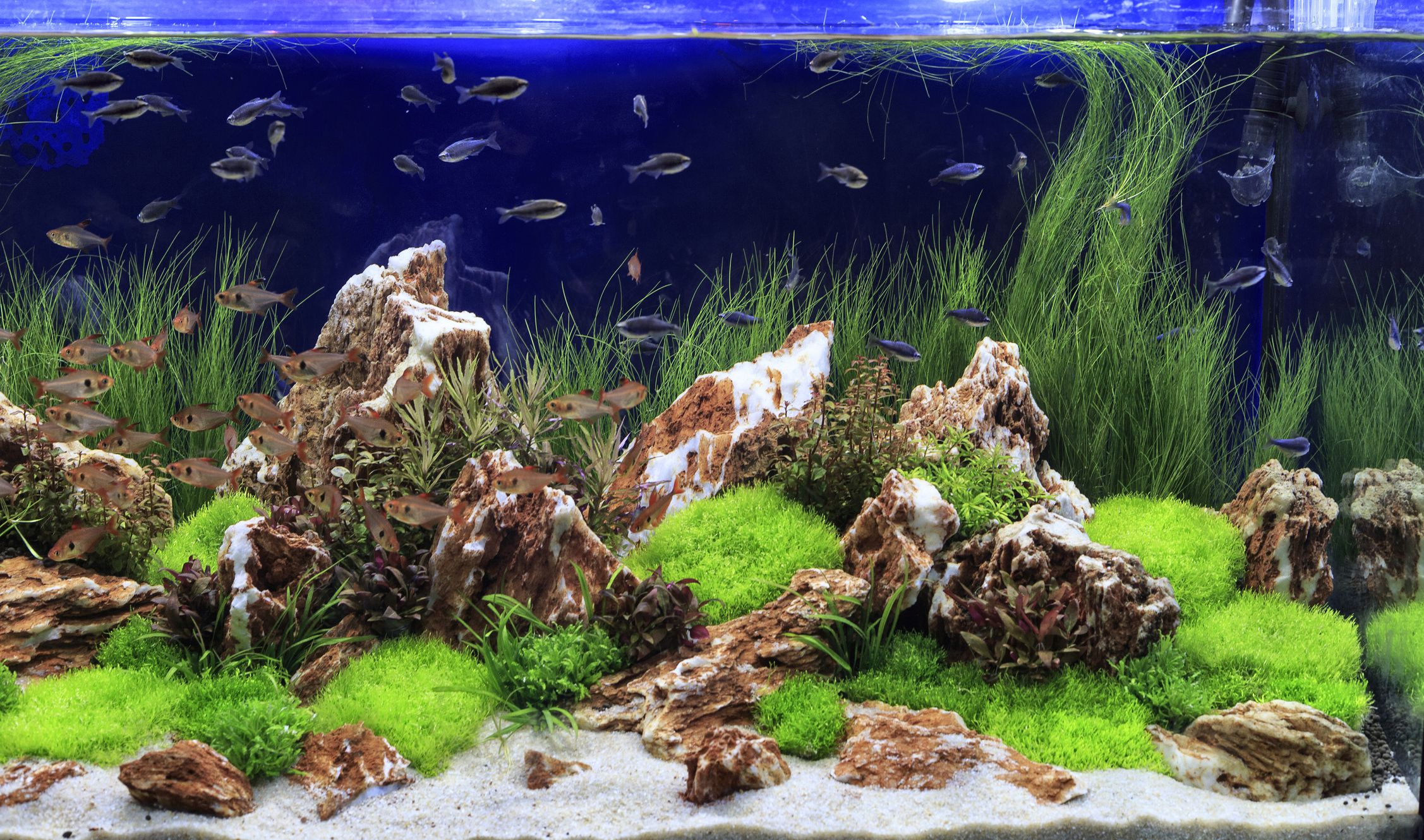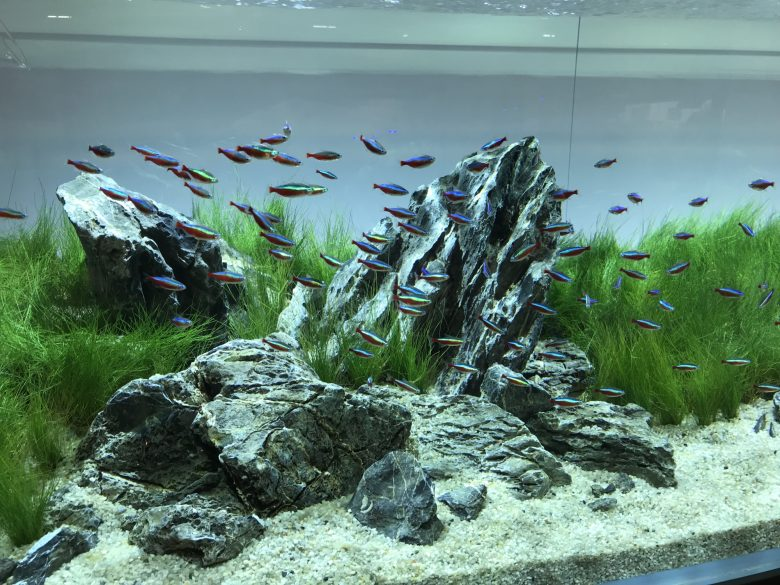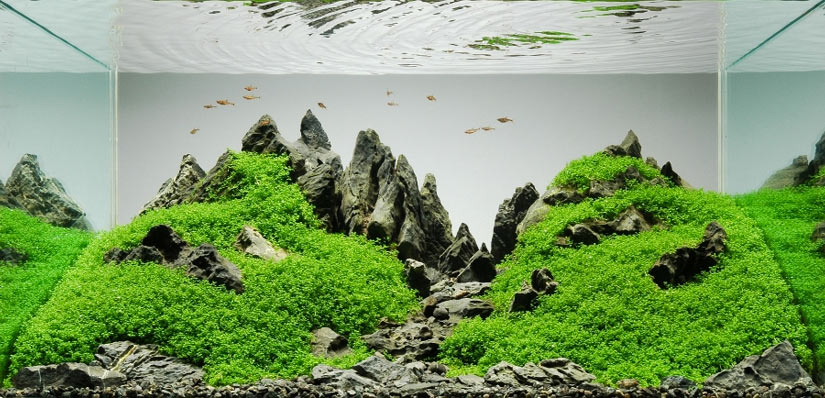Aquascaping is not just about creating a visually appealing aquarium, it is an art form that allows you to mimic nature’s beauty in a confined space.
By carefully selecting plants, substrate, and decorative elements, you can transform an ordinary fish tank into a stunning underwater landscape.
In this article, we will explore the basics of aquascaping, essential tools you need, tips for designing your aquascape, and effective maintenance techniques to ensure your aquarium remains healthy and beautiful.
Understanding the Basics of Aquascaping
What is Aquascaping?

Before diving into the depths of aquascaping, it’s important to understand what it is. Aquascaping is the art of designing and arranging aquatic elements such as plants, rocks, wood, and substrate in an aquarium to create an aesthetic and harmonious underwater environment. It goes beyond the typical fish tank setup and aims to recreate a natural habitat for aquatic life.
When it comes to aquascaping, there are various styles and techniques that can be employed. Some popular styles include the Nature Aquarium style, which focuses on creating a natural and balanced ecosystem, and the Dutch style, which emphasizes the use of different plant species to create intricate and colorful displays.
Each style has its own unique characteristics and requires different approaches in terms of plant selection, hardscape arrangement, and overall layout.
Importance of Aquascaping for Aquarium Health

Apart from its visual appeal, aquascaping plays a crucial role in maintaining the health and well-being of your fish and other aquatic creatures.
A well-designed aquascape provides hiding spots, breeding areas, and natural territory divisions, which help reduce stress and promote the overall happiness of your aquatic pets.
Furthermore, aquascaping can have a positive impact on the water quality in your aquarium. By carefully selecting and arranging aquatic plants, you can create a natural filtration system that helps remove harmful substances from the water.
Plants absorb nutrients like nitrates and phosphates, which are byproducts of fish waste, and convert them into biomass. This not only improves water quality but also helps prevent the growth of algae, creating a healthier and more balanced ecosystem.
In addition to the benefits for aquatic life, aquascaping also offers a rewarding and therapeutic experience for hobbyists. The process of planning and creating a beautiful underwater landscape can be both challenging and fulfilling.
It allows you to express your creativity and connect with nature in a unique way. Whether you are a beginner or an experienced aquascaper, there is always something new to learn and explore in this fascinating hobby.
Essential Tools for Aquascaping
Choosing the Right Substrate

When it comes to selecting the substrate for your aquascape, it’s important to consider the specific needs of your plants. Substrate serves as the foundation for your aquatic plants, providing them with essential nutrients and anchorage.
Options like gravel, sand, and specialized aquatic plant substrates are available, each with its own advantages and considerations. Research the requirements of your chosen plants to ensure a suitable substrate choice.
Gravel is a popular choice for aquascaping due to its versatility and availability in various sizes and colors. It provides a stable base for plants and allows for proper water circulation.
Additionally, gravel can act as a biological filter, hosting beneficial bacteria that help break down waste and maintain water quality.
Sand, on the other hand, offers a more natural look and is ideal for plants with delicate root systems. It allows for easier planting and promotes the growth of beneficial organisms like worms and snails.
However, sand can compact over time, leading to anaerobic conditions if not properly maintained.
Specialized aquatic plant substrates are specifically designed to provide optimal conditions for plant growth. These substrates are usually enriched with essential nutrients like iron and trace elements, promoting healthy root development and vibrant foliage.
They also help maintain stable pH levels and prevent the release of harmful substances into the water.
Importance of Aquatic Plants

In the realm of aquarium aquascaping, where art meets nature, the significance of aquatic plants transcends mere aesthetic appeal.
Delving into the intricacies of planted aquariums, one discovers a symphony of life and balance. Aquarium plants are not mere decorations; they are vital components that contribute to the overall health of the aquatic ecosystem.
Live aquatic plants play a pivotal role in mitigating algae growth, serving as natural competitors that thwart the dominance of undesirable algae blooms.
The delicate dance between flora and fauna in a well-maintained fish tank is an exquisite example of nature working in harmony. However, to achieve this equilibrium, attention to detail is crucial.
Temperature fluctuations in aquarium water can be detrimental to the well-being of both fish and plants. Maintaining the right water temperature is akin to orchestrating the ideal habitat for tropical fish and ensuring optimal plant growth.
For those seeking a low-maintenance yet aesthetically pleasing option, low-tech planted aquariums provide an answer.
Here, the judicious use of light, supplemented by a light timer, and the strategic placement of live plants create an environment that fosters life without promoting excess algae growth.
When venturing into the world of aquascaping, acquiring the right tools from the local pet store is the first step. From choosing the correct substrate and adding root tabs for nutrient supplementation to controlling water pH, each detail is a brushstroke in the canvas of a flourishing aquatic landscape.
Consider the iwagumi aquascape as an exemplary model. This style emphasizes minimalism, employing carefully selected rocks and precisely positioned aquarium plants to create distinct focal points.
The result is a captivating underwater tableau where each element serves a purpose in the grander scheme of the aquascape.
The art of aquascaping is not just about arranging rocks and plants; it’s about understanding the delicate balance that sustains life within the confines of an aquarium.
By integrating live aquatic plants in such a way that they become an integral part of the ecosystem, one not only enhances the visual appeal but also fosters a thriving and harmonious underwater world.
Selecting Decorative Elements

Decorative elements such as rocks, wood, and other aquascaping materials add depth and texture to your aquarium. They also provide the perfect canvas for attaching mosses and epiphytic plants, which can enhance the natural feel of your aquascape.
When choosing decorative elements, consider their impact on the water chemistry and compatibility with the chosen plant and fish species. Always opt for materials that are inert and won’t release harmful substances into the water.
Rocks, such as lava rocks or dragon stones, can create stunning focal points and serve as natural anchors for plants. They can be arranged in various formations, such as mountains or caves, to mimic natural landscapes.
It’s important to choose rocks that are aquarium-safe and won’t alter the water parameters or release minerals that could harm the inhabitants.
Wood, like driftwood or spiderwood, adds a touch of authenticity to an aquascape, replicating the look of submerged tree branches or roots. It provides hiding spots for fish and creates a natural habitat for beneficial microorganisms.
However, it’s crucial to select wood that has been properly cured and won’t release tannins or other substances that could discolor the water or affect the pH level.
Other aquascaping materials, such as ceramic caves or resin decorations, can be used to create additional hiding spots or add artistic flair to the aquarium. These materials should be thoroughly rinsed before adding them to the tank to remove any potential residues.
Designing Your Aquascape

Designing an aquascape is like creating a piece of art. It requires careful consideration of various principles to achieve a visually stunning and balanced composition.
Let’s explore some key principles that can help you create a captivating aquascape.
Principles of Aquascape Design
The golden ratio, also known as the rule of thirds, is a useful guideline to follow when arranging key elements such as plants, rocks, and driftwood in your aquascape. This principle involves dividing the aquarium into sections to create a visually pleasing layout. By placing your focal points and key elements along these dividing lines, you can achieve a harmonious and well-balanced composition.
In addition to the golden ratio, there are other techniques that can enhance the visual appeal of your aquascape. One such technique is the use of focal points. A focal point is a visually dominant element in your aquascape that draws attention and creates a focal area.
It can be a stunning driftwood centerpiece, a cluster of colorful plants, or a carefully positioned rock formation. By creating a focal point, you add interest and guide the viewer’s eye through your aquascape, making it more visually appealing and engaging.
Another important aspect of aquascape design is balancing color and texture. Color and texture play a crucial role in creating an attractive aquascape.
By carefully selecting plants with different leaf shapes, sizes, and colors, you can create contrast and visual interest. Mixing different shades of green, red, and purple can add depth and vibrancy to your aquascape.
Additionally, incorporating various textures through the use of different types of plants, rocks, and wood can create a visually appealing and dynamic composition.
When it comes to arranging the elements in your aquascape, consider the concept of framing. Framing involves using plants or other elements to create a frame around your focal point, drawing attention to it and adding a sense of depth to the overall composition. This technique can help create a more visually pleasing and well-structured aquascape.
Layering is another technique that can add depth and dimension to your aquascape. By placing plants and other elements at different heights and depths, you can create a sense of depth and perspective. This can make your aquascape more visually interesting and dynamic.
Remember, designing an aquascape is a creative process, and there are no strict rules. Experiment with different layouts, elements, and techniques to find what works best for your personal style and the specific needs of your aquarium inhabitants. With time and practice, you can create a truly captivating and visually stunning aquascape.
Maintenance Tips for Your Aquascape

Creating and maintaining a stunning aquascape requires more than just setting up the tank and adding some plants and fish. It involves regular care and attention to ensure the health and beauty of your underwater world.
In this article, we will explore some essential maintenance tips that will help you keep your aquascape in top condition.
Regular Water Changes
One of the most important aspects of maintaining a stunning aquascape is regular water changes. This simple yet crucial task helps remove accumulated toxins, replenish essential nutrients, and ensure stable water parameters.
Aim for weekly water changes of around 20-30% to maintain optimal water quality for your aquatic plants and fish.
During water changes, it is also a good opportunity to siphon out any debris or uneaten food that may have settled on the substrate. This will help prevent the buildup of organic matter and keep your aquascape clean and healthy.
Pruning and Trimming Techniques
Aquatic plants can grow rapidly, and without proper maintenance, they can quickly overshadow the beauty of your aquascape. Regular pruning and trimming are essential to control plant growth, promote bushier growth, and prevent shading of other plants.
When pruning, it is important to use aquarium-safe scissors or tweezers to trim excess leaves and stems. This will ensure a neat and well-maintained appearance while minimizing the risk of damaging the plants. It is also advisable to remove any dead or decaying plant material as it can release harmful substances into the water.
Additionally, consider rearranging the plants from time to time to create new focal points and add visual interest to your aquascape. This will also help prevent the formation of dense areas where debris can accumulate.
Dealing with Algae Growth
Algae growth is a common concern in aquariums, but with proper care and maintenance, it can be controlled. Consistent lighting duration, appropriate nutrient levels, and regular water changes play a crucial role in preventing excessive algae growth.
It is important to find the right balance of light intensity and duration for your specific plant species. Some plants may require more light, while others may thrive with less. Experimentation and observation are key to finding the optimal lighting conditions for your aquascape.
In addition to lighting, nutrient levels should be carefully monitored and adjusted as needed. Too much or too little nutrients can promote algae growth. Regular water testing and the use of fertilizers specifically formulated for aquatic plants can help maintain the right nutrient balance.
Introducing algae-eating aquatic creatures, such as snails or algae-eating fish, can also help keep the algae population in check. These natural cleaners can help control algae growth by consuming the excess nutrients that fuel its development.
In case of persistent algae growth, adjustments to lighting and dosing schedules may be necessary. It is important to be patient and persistent in finding the right balance for your specific aquascape.
With these aquascaping tips and techniques, you can create a stunning aquarium that not only adds beauty to your space but also provides a healthy and thriving environment for your aquatic pets. Remember to experiment, be patient, and enjoy the process of designing and maintaining your aquascape.
Happy aquascaping!

